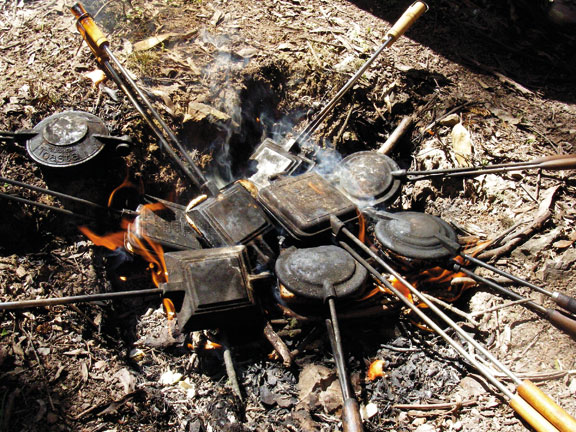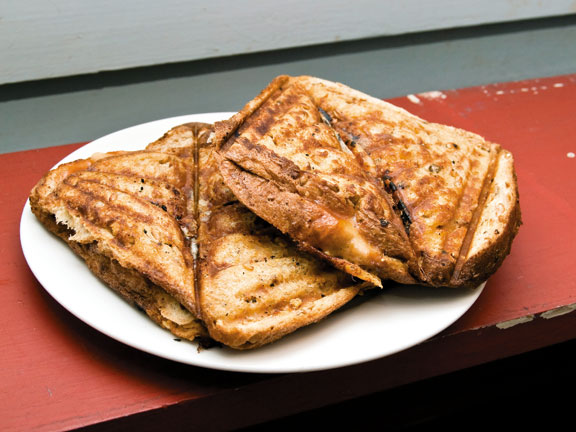Equipment
Campfire cooking requires some planning. Especially when it comes to equipment. You may need to keep it light, but if you can afford some extra weight, invest in good, cast-iron camping cookware. It will last a lifetime and, once seasoned, will be better than any expensive non-stick cookware item you can name. Believe me, I've seen this proven many times with confirmed sceptics, who grumble about the weight and the rust, and then become born again cast-iron converts. It's all I use at home when frying or stir-frying. My next investment is another Dutch oven for stews, damper bread, what-have-you.
Toasties with the mostie
But I absolutely would not gather around the campfire without my trusty jaffle iron. At least that's what we call them in Tasmania, where I come from. In New Zealand they are known as toasted sandwich makers — and in the USA: hobo pie makers. Whatever you choose to call yours, I've no doubt they will become a favourite for the campfire. Jaffle irons come in single or double layouts and they're also made out of heavy cast aluminium, but I prefer the cast iron versions any day. These can be used to make bread and almost any fillings into gourmet fare.
Here's how
Butter bread slices and place the first one butter-side down onto the bottom of your well-seasoned jaffle iron, then layer up your fillings before adding the last layer of bread (butter-side up), close the lid and push down the clip to secure it. Use a sharp knife to cut away any crusts outside of the cooking iron. These will just burn to a crisp (although sometimes kids love these burnt and buttery morsels, so perhaps ask around the campfire first!). Place your jaffle iron over good, hot embers and turn frequently. It may take some time to judge the right cooking time which will vary according to the heat of the fire or barbecue.
Some fillings to try include baked beans and cheese, thinly-sliced bacon and an egg, tinned stew, or steak and kidney, chilli con carne or chilli beans; and any other savoury filling you can think of. For sweeter versions try tinned apple or other tinned fruits, or fresh or frozen berries. After cooking sprinkle these with icing sugar or caster sugar, if desired. I also love banana and peanut butter. You might like to try mashed banana and a square or two of chocolate.
Damper Bread
Truly a campfire classic, Damper Bread is also versatile and once you master the basics you can spice it up or dress it down.
 page.
For the latest reviews, subscribe to our Motorhomes, Caravans & Destinations magazine here.
page.
For the latest reviews, subscribe to our Motorhomes, Caravans & Destinations magazine here.
- 450g (3 cups) self-raising flour
- Pinch of salt
- 80g butter, chilled and cubed
- 185ml (3/4 cup) water or beer
 page.
For the latest reviews, subscribe to our Motorhomes, Caravans & Destinations magazine here.
page.
For the latest reviews, subscribe to our Motorhomes, Caravans & Destinations magazine here. 






